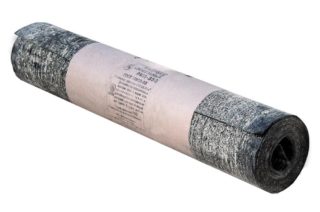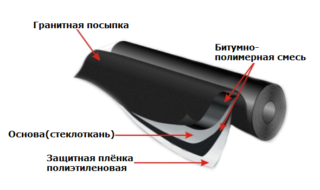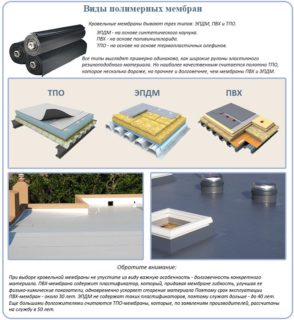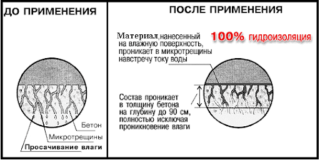A concrete roof is used in the construction of buildings and structures of various types. Concrete is more often used where a flat or inclined roof is structurally laid, and the use of other roofing materials for one reason or another is impractical or impossible. A properly poured concrete roof leaves the rooms underneath warm and dry, but even high-quality concrete will not ensure its full functioning without protection with special waterproofing compounds and coatings.
Waterproofing requirements
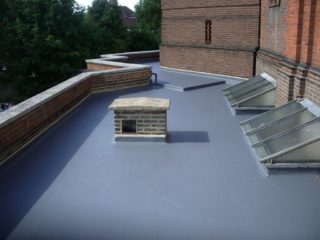
All waterproofing materials are divided into two groups - layered and liquid. In this case, the type of material selected does not matter much, since any of them is characterized by:
- high elasticity;
- long service life;
- wear resistance;
- excellent thermal insulation properties.
For the consumer, in each specific case, the method of applying the material to the concrete surface is much more important. However, if waterproofing will be used as a finishing roofing material, it will not be superfluous to familiarize yourself with such parameters as strength and resistance to aggressive chemicals, as well as to possible changes in weather conditions (rain, snow, hail, etc.).
Laying waterproofing
Roofing material
The classic roll material used for waterproofing for many years. Roofing material protection is a coating that is rolled over the concrete surface in several layers. In this case, the displacement of the rolls relative to each other should be at least half of its width. The layers are glued together with bitumen, resulting in a cheap and durable coating.
Sheet bitumen or euroruberoid
Bitumen is laid with an overlap of at least 10 cm wide.
Rolls of fiberglass, treated with dressing, are used as a finishing roofing material, and without it - only as an interlayer. Due to its fragility, bituminous material made on the basis of fiberglass is used only for temporary waterproofing during roof repairs.
EPDM Roof Waterproofing Film
Rolled PVC Roof Films
The membrane has a complex structure and consists of a polyester mesh (reinforcing base) and a filler made of plasticizers. The roofing film is overlapped, the joints are welded with hot air. In this case, the strength of the seam exceeds the strength of the material itself.
PVC membranes have one significant drawback - sensitivity to the effects of chemicals that make up bitumen, gasoline, solvents, machine oil, etc.
Liquid materials
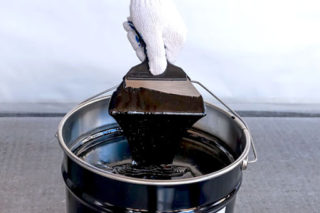
The range of products intended for liquid insulation of concrete roofs includes a penetrating primer and all types of coating and painting materials. These materials are very popular as they can be applied to the most difficult surfaces. Unlike flooring materials, liquid waterproofing allows you to get a reliable monolithic coating that does not have seams.
Bituminous mastic
Bituminous mastic is made on the basis of bitumen resin, to which polymers are added to improve quality. Bituminous mastic can be hard or very thick mastic. To obtain a consistency suitable for application to concrete, thick mastic is diluted with a solvent, and solid mastic is heated. In this case, the first is applied to the concrete surface in a cold state, and the second - in a hot one.
Among the advantages of bitumen mastic, builders note a long service life (over 25 years) and a high degree of adhesion to the protected surface. Of the shortcomings, the most significant are:
- softening by sunlight;
- the need to apply several layers of mastic.
Polymer mastic
- immunity to temperature changes;
- fast drying;
- absolute moisture resistance.
Liquid rubber
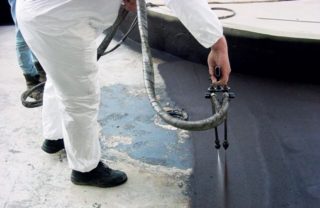
Liquid rubber is a two-component compound that can be applied in three ways:
- Painting - applied with a brush or spatula.
- Filling - poured onto the protected surface and accelerated over it with a spatula.
- Spraying is the most effective and high quality waterproofing coating. Requires a two-torch sprayer, with the help of which liquid rubber is sprayed onto concrete with a continuous canvas that does not have a single seam.
Among the advantages of this material:
- durability (service life up to 50 years);
- elasticity;
- the ability to use as a topcoat;
- strong adhesion to concrete;
- environmental friendliness;
- fire resistance.
Penetrating waterproofing
The main advantages of primers:
- vapor permeability;
- strengthening the concrete surface;
- high speed of applying the composition to the treated surface.
The use of primers provides for the obligatory arrangement of the finishing roof.
Primers, depending on the base, are:
- Water-dispersive - used for dedusting roofs.
- Polyurethane - used for waterproofing. The composition obtained by mixing the primer with sieved sand can be used to seal small cracks and chips on the concrete surface.
- Epoxy - are two-component compounds that are mixed before application. They are used for waterproofing and strengthening the structure of concrete.
When equipping a protective waterproofing coating on a concrete roof, it is treated with a primer from the inside and outside. As a result, moisture penetration into the room will be excluded.
Preparation of the concrete roof base
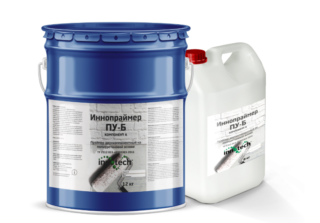
The concrete base is first of all cleared of debris and dust - it is best to use a compressor for this. At the same time, they drive all the dust and debris into one corner, and then remove them with a construction vacuum cleaner. Cleaning the cracks in the places where various equipment is installed is carried out with a stiff wire brush. You can finally get rid of dust using a car high pressure washer, but after that the roof will have to be thoroughly dried.
Check the concrete roof for defects, which are sealed with ordinary cement-sand mortar. A surface completely free of dust and debris is treated with a solution of penetrating waterproofing or bitumen mastic, for example, liquid waterproofing for a roof. At the same time, the best results are obtained by using a polyurethane primer, with the help of which they achieve:
- almost complete dedusting;
- strengthening the concrete surface;
- high quality primary waterproofing layer.
Apply polyurethane primer in at least two coats.
After the concrete base of the roof is leveled and treated with impregnation, the process of waterproofing it begins.

